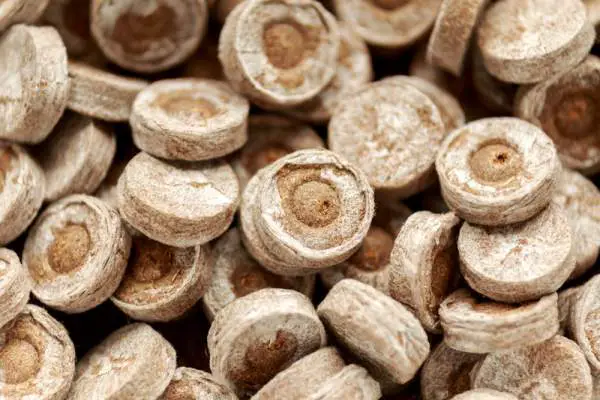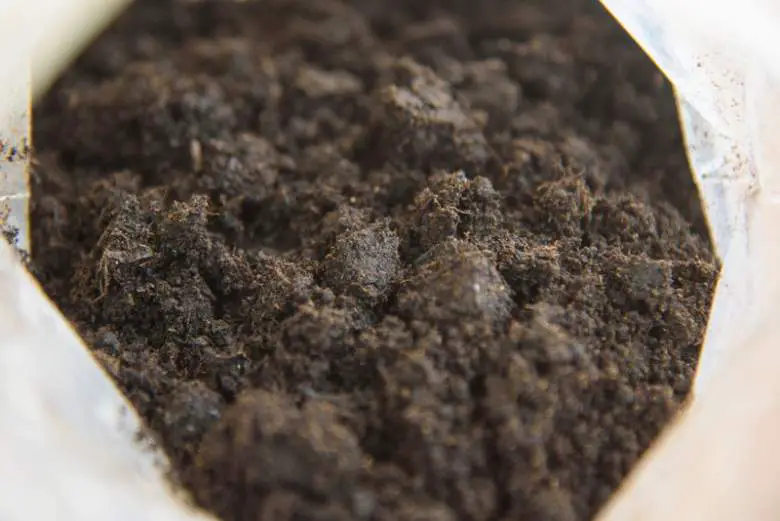There is no secret that hydroponic growers are always out to find the best products and techniques to get the most vigorous growth and best yields possible. Because of this mentality, many skip seeds and use seedlings to save time.
When transplanting, there are many options available, peat pellets, Rockwool, coco coir, and others. One new kid on the block is the Jiffy Pellets, and for new gardeners, they can be the most straightforward way to get your seeds going.
However, the question remains, because there is a debate on these small plugs.
Are Jiffy Pellets good for hydroponics? Many gardeners say they should use no peat moss in hydroponics when starting seedlings. Once these break down, they end up in your reservoir and can clog your pump. Jiffy Pellets are in mesh, so are these starters any different?
What are Jiffy Pellets?
You will find Jiffy pellets sold as small dry disks. When you add water to the dry peat moss, they will expand. Because of this, and to stop them from breaking apart. It contains all the peat or substrate in a fine mesh. This acts as a pot around the material.
You insert your seed in the top and press it into the potting mix. As the seed germinates and roots grow, they arrive at the mesh. Depending on the plant, some roots find the mesh a barrier and remain inside.
Other roots may push through the holes, although as there are no external growing media, they will be root pruned.
Once seedlings are ready, they can be transplanted. All you need to do is drop the Jiffy into a hole and start feeding it.
While very convenient, because they don’t need other pots and potting mixes, and they take up very little space. They are more expensive than a traditional pot and growing media.
Besides this, there are concerns about your plant health, the environment, and if they are actually suitable for hydroponics.
Why I Shouldn’t Use Peat Pellets
Hydroponics is a soilless gardening system, and from the seeds to the plants, it is the gardener’s job to deliver the right amount of nutrient solution for their growing needs. Add in lighting, temperature, and moisture, and you can find this control just can’t be achieved in soil.
To pass water around your system, you need a water pump, and here is where the debate starts. They make Jiffy Pellets from peat, and as soon as you add water to the flat disks, they expand. Over time the peat eventually breaks down, it can work loose from the mesh and find its way into your system to be flushed to your reservoir, where it clogs your pump.
You will find alternatives like Rockwool or coco coir, or a similar growth media that is best for seedlings in hydroponics.
You find that because of the potential pump issues, peat pellets are perfect for seedlings, which you will eventually transplant to soil.
They prove Rockwool and coco coir ideal as growing mediums as they retain water and allow oxygen in the right amounts. Aside from this, they are less likely to break down and clog your pump.
Peat Pots and Environmental Concerns
Jiffy Pellets has claims of biodegradability and being composed of natural materials. You will expect the pellets to lose their tidy packaging mesh when it merges with the surrounding soil.
However, there is one thing to note, and that is the lack of a given time frame for the mesh material is given before it decomposes.
Many gardeners take up the role of growers as they become more environmentally conscious and wish to change their lifestyle to a greener and more efficient manner.
With Jiffy pellets, there are concerns about the biodegradability of the mesh, because there are reports from regular soil gardeners, that they don’t decompose as people expect. Even after two years in soil, the Jiffy Pellet mesh is mostly intact, aside from tears where roots work their way out.
Are Jiffy Pellets Good to Use in Hydroponics?
You can find some reports that gardeners do use Jiffy Pellets in hydroponics, yet they place these inside mesh pots to make sure they can sit in their system.
There are reasons Jiffy Pellets shouldn’t be used in your hydroponic system.
Mesh & Roots
If you were to use these pellets in your hydroponic system, you wouldn’t be able to do so as they are. Many plants become rootbound inside the mesh, and you will find stunted growth of your crops. The way around this is to remove the mesh and then remove the peat from around your plant’s roots.
To do this for multiple plants is time-consuming and you can cause stress or damage to your plant roots as you rinse them in water to clear away the peat. You then have to dispose of the mesh separately.
Clogs
The consensus between growers is not to use peat or any similar growing media inside a hydroponic system. As your solution flows, you can find the peat accumulates inside your system as it tangles with roots to cause a blockage, or worse, it finds its way back to your reservoir and blocks your water pump.
Should this happen, all your crops can be at risk of not receiving water and nutrients.
Sustainability
Jiffy pellets comprise peat moss as their primary material. While this offers lots in the way of nutrients, many individuals are unaware of the ecological concerns of using peat moss for anything.
Peat moss doesn’t have an infinite supply. Around the world, there are only so many areas where peat moss can be located, and the mining of this occurs much faster than nature can produce it. A peat bog may only grow by 0.02 inches per year.
Mining of the peat is another factor. Peat holds carbon that will be released into the atmosphere when mined, and it continues to do so long after mining ceases.
The miners also need to drain the water from the bogs, and by doing so, this can have a severe impact on the surrounding water table. Such is the effect, peat is becoming less of a primary growing media in any form of gardening, and alternatives are being sought.
Best Jiffy Pellet Alternative
The drawbacks of using Jiffy pellets should be sufficient for any gardener to see they shouldn’t be used. Because of this, indoor gardeners seek alternatives, and one of the best is coco coir pellets. While there is still a manufacturing process, the fibers used to make these pellets were once a waste product in the coconut harvesting industry.
Coco coir has many benefits going for its use. It has fantastic water retention properties, and there is sufficient space in the fibers for rapid root growth and oxygenation. As an aside, you can find insects are not keen on settling in this media.
Coco coir is also reusable depending on how you use it in your system; all it takes is cleaning and sterilization before it’s ready to use again. One downside at present is it is still more expensive than peat to use.
Conclusion
Jiffy Pellets are convenient to use, yet they are more geared to seed germination than cloning. Many hydroponic growers prefer to use cloning as their preferred method of introducing plants into their system.
With this, there are a few reasons you need to opt for using Jiffy Plugs in your system as they don’t offer any advantage over other forms of media for cloning.
Last, you can also do your bit by not using them and preserving an extra minor part of the natural environment.





